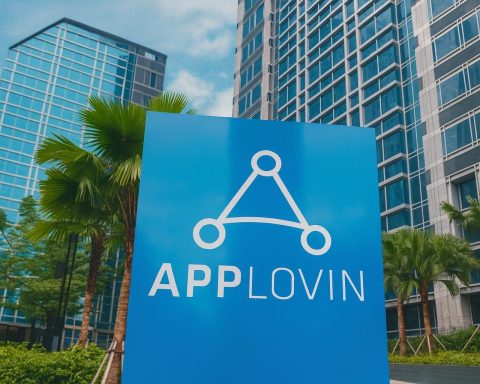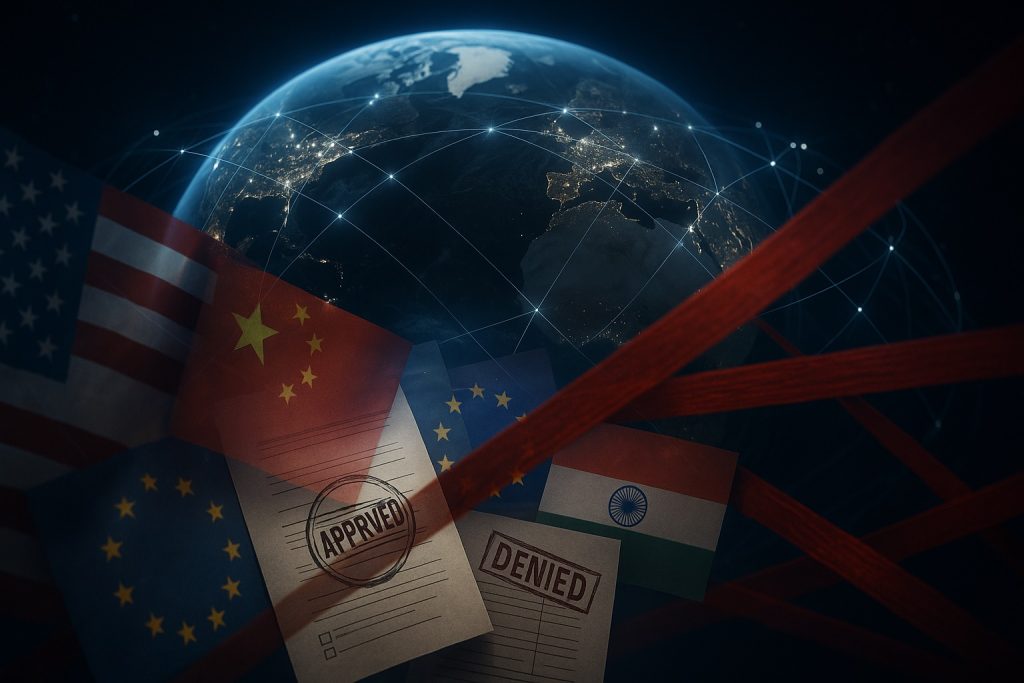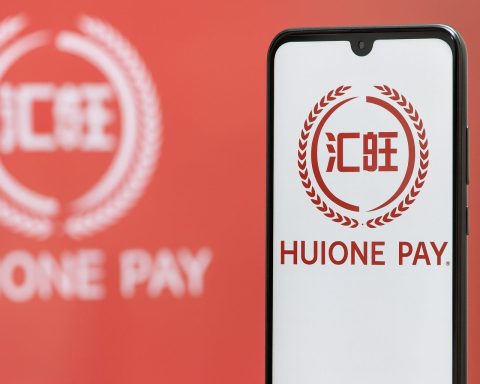- Cambodia has over 22 million cellular subscriptions in a population of about 17 million, yielding a mobile penetration of roughly 131.5% due to multiple SIM ownership.
- As of early 2023, fixed internet subscriptions were about 310,000 nationwide, underscoring a mobile-first connectivity pattern.
- Cambodia’s first submarine cable, the Malaysia-Cambodia-Thailand link, landed in 2017, and a Hong Kong–Sihanoukville upgrade planned for 2024 will add 640 km of undersea fiber within Cambodian territory.
- The core backbone is operated by Telecom Cambodia, Viettel/Metfone, and CFOCN, with 38 licensed ISPs and five fiber-infrastructure operators reported in 2023.
- In early 2023 about 11.37 million Cambodians were online (roughly 67.5% of the population), but by early 2024 usage was around 56–57% due to methodology changes.
- Urban residents access broadband more reliably, while 25–26% of Cambodians live in cities and about 75% reside in rural areas.
- Metfone (Viettel Cambodia) claimed around 10 million subscribers in 2023, about a 50% market share, with extensive 2G/3G/4G coverage and ongoing fiber and 5G trials.
- Smart Axiata is the second-largest operator with nationwide 4G and competitive data plans, and Cellcard (CamGSM) is the third major operator expanding fiber and preparing for 5G.
- The government’s 2015 Telecom Law created the TRC regulator, while a 2021 plan for a National Internet Gateway was paused in 2022 amid backlash and concerns over surveillance.
- SpaceX Starlink signaled entry in 2023, as of mid-2025 remains unlicensed in Cambodia, with pilots by local firms and a typical kit costing about $600 upfront and $200 per month.
Overview of Cambodia’s Internet Infrastructure
Cambodia’s internet landscape has transformed rapidly over the past decade, heavily favoring wireless over wired connectivity. Mobile broadband is the primary backbone of internet access, with over 22 million cellular subscriptions in a country of ~17 million people [1] – a penetration of 131.5% (many users own multiple SIMs). Major cities are blanketed by 3G/4G networks, and even 4G LTE service now reaches most districts. In contrast, fixed broadband (fiber or DSL) remains limited mainly to urban centers. As of early 2023, there were only about 310,000 fixed internet subscriptions nationwide [2], reflecting the still-nascent fiber-optic rollout compared to mobile. Cambodia’s fiber-optic backbone is growing – with domestic trunk lines laid along highways and new submarine cable projects underway – but last-mile fiber-to-the-home is available to relatively few (mostly businesses and urban households).
International bandwidth historically transited through Thailand and Vietnam, but Cambodia is expanding its direct connections. The country’s first submarine cable (the Malaysia-Cambodia-Thailand cable) landed in 2017, and an upgraded submarine link from Hong Kong to Sihanoukville is planned for 2024 [3]. Funded by Chinese investment, this new high-capacity cable will replace older links and add 640 km of undersea fiber within Cambodia’s territory [4], aiming to make internet service faster and cheaper. The core backbone is operated by a few players (Telecom Cambodia, Viettel/Metfone, and CFOCN), which interconnect with dozens of smaller ISPs [5] [6]. As of 2023 there are 38 licensed ISPs and 5 fiber-optic infrastructure operators in the country [7], but the market is dominated by mobile networks providing wireless broadband to the masses. Overall, Cambodia’s infrastructure heavily emphasizes mobile and wireless delivery, with ongoing investments to extend fiber optics and international gateways for a more robust network.
Internet Penetration and the Urban–Rural Digital Divide
Internet use in Cambodia has surged but still lags behind regional neighbors. At the start of 2023, about 11.37 million Cambodians were online, equivalent to ~67.5% of the population [8]. (By early 2024, revised estimates put usage around 56–57% due to methodology changes [9].) This penetration is lower than in Vietnam (~79% in 2024) or Thailand (~85% in 2023) [10] [11], highlighting room for growth. In raw terms, 5–6 million Cambodians remain offline [12]. Crucially, access is highly uneven: urban residents are far more likely to use the internet than rural villagers. Only 25–26% of Cambodians live in cities [13] [14], yet these urban areas enjoy the vast majority of reliable broadband coverage. Rural provinces, home to ~75% of the population, see much lower connectivity due to sparse infrastructure and lower device ownership. For example, mobile internet usage is “considerably more likely” in urban areas, whereas in remote villages many people still lack smartphones or any internet device [15]. During the COVID-19 pandemic, this digital divide became stark: an estimated 2 million rural children could not access online schooling because their families had no internet or smart devices at home [16].
Socioeconomic factors contribute to the gap. Poorer and rural households struggle with the cost of devices and data (discussed further below), and lower literacy rates outside cities also hinder internet uptake. There is also a gender gap in digital access – women make up 50.5% of the population but only about 45% of social media users [17] – likely reflecting cultural and educational disparities. The government has acknowledged these inequalities and even noted that many students lacked internet bandwidth or smartphones for remote learning [18]. In response, initiatives like “community tech centers” are being launched (158 centers are planned across provinces) to provide public access points for students and residents in underserved areas [19]. In summary, Cambodia’s internet penetration has grown impressively in recent years, but access remains uneven, with a deep urban–rural divide and segments of the population – especially rural, low-income, and female groups – still largely disconnected from the digital revolution.
Key ISPs and Mobile Providers in Cambodia
The Cambodian telecom market is led by a few dominant players, especially in mobile services. Three companies – Metfone, Smart Axiata, and Cellcard (CamGSM) – account for roughly 90% of mobile subscribers [20]. Here’s a brief look at the major providers:
- Metfone (Viettel Cambodia) – Operated by Vietnam’s Viettel, Metfone is the largest telco. It claims around 10 million subscribers (nearly 50% market share) as of 2023 [21]. Metfone has an extensive 2G/3G/4G network reaching rural areas (a legacy of Viettel’s aggressive rural coverage strategy) and has been investing in fiber and 5G trials.
- Smart Axiata – Backed by Malaysia’s Axiata Group, Smart is the second-largest operator. It has nationwide 4G and is known for competitive mobile data plans and urban coverage. Smart has been a leader in network quality (e.g. leading in download speeds in some reports) and also offers “Smart @Home” fixed wireless broadband.
- Cellcard (CamGSM) – A Cambodian-owned operator (part of Royal Group), Cellcard is the third major player. It has a strong urban presence and has won awards for network speed and gaming experience. Cellcard has also begun expanding fiber broadband (“Cellcard Home” service) and is preparing for 5G launch with technical partnerships (e.g. Huawei) [22].
- Others – A few smaller operators exist, like CooTel, SeaTel, and (formerly) qb. Their market share is tiny – in fact, qb ceased operations a few years ago. Dozens of ISPs offer fixed broadband in niche markets (e.g. EZECOM, SINET, Opennet, etc.), often reselling bandwidth from the big three or from state-owned Telecom Cambodia’s backbone. For most Cambodians, however, internet service is synonymous with mobile data from one of the “big three” carriers.
Competition among the top providers has driven mobile data prices down and improved 4G coverage in cities. All three have piloted 5G on a limited basis, though full rollout awaits spectrum policy (see Future Trends). Notably, the Telecommunications Regulator of Cambodia (TRC) oversees the sector, and the government itself (via Telecom Cambodia and partnerships) plays a role in infrastructure development. Overall, Cambodia’s ISP landscape is concentrated, with a few large telecom firms providing the lion’s share of connectivity and a long tail of smaller ISPs serving specific areas or enterprise customers.
Challenges to Internet Access in Cambodia
Despite the rapid growth in connectivity, Cambodians face several barriers to accessing reliable, affordable internet. Key challenges include:
- High Cost Relative to Income: Price remains a significant hurdle. A fixed broadband subscription costs on average $28 per month in 2023 [23], a hefty sum in a country where the minimum monthly wage is around $194 and many workers in informal sectors earn even less [24]. Mobile data is cheaper (about $0.42 per GB in 2022) [25] and pay-as-you-go mobile plans make internet somewhat accessible to low-income users. However, for the 15% of Cambodians below the poverty line [26], even a few dollars a month for data can be prohibitive. The cost of smartphones and devices is another barrier, especially in rural areas where household incomes are low. While prices have been dropping and second-hand phones are common, the upfront expense keeps many families offline. ISPs have introduced affordable packages, and the popularity of social media (Facebook-based plans, etc.) helps drive usage, but affordability remains a core issue limiting universal access. Notably, industry observers expect that upcoming 5G services could be priced higher, potentially widening the affordability gap [27].
- Infrastructure Gaps and Geographic Obstacles: Cambodia’s geography and development disparities make building out networks challenging. Large swathes of the countryside lack fiber backhaul and depend on distant cell towers or older 3G signals. Remote villages, mountainous areas, and islands often have weak or no coverage due to the high cost of extending fiber or microwave links there. In many rural villages, even if mobile signal exists, it may support only basic 2G voice or spotty 3G data, not reliable broadband. The power grid’s limitations also affect internet uptime – frequent power outages nationwide can knock out telecom equipment and interrupt connectivity [28]. (In 2023, planned electricity blackouts as long as 8 hours impacted operators’ ability to deliver consistent service [29].) The government has urged operators to expand coverage to rural zones (e.g. a plea to Smart Axiata to extend service to all schools and hospitals [30]), and projects are underway to put up hundreds of new cell sites and “antenna masts” even in less populated districts [31]. Still, the last-mile gap is evident – rural Cambodians are far less connected, partly because the infrastructure hasn’t fully reached them.
- Digital Literacy and Social Factors: Even where internet is available, not everyone can make use of it. A significant segment of the population has limited digital literacy – older Cambodians and those with minimal education may not know how to use online services or see its relevance. Khmer-language content online is growing but remains less abundant than English, which can exclude non-English speakers from many resources. Cultural factors (like a traditionally oral society and some distrust of technology) also slow adoption among certain groups. The gender gap noted earlier (women using internet less than men) hints at underlying social norms and educational imbalances. The government and NGOs have started digital literacy programs to address these soft barriers, but it will take time for internet usage to truly become universal across all demographics.
- Government Regulation and Censorship: A more controversial challenge is the regulatory environment. Internet freedom in Cambodia is rated “Partly Free” by observers [32] [33] – while most people can access popular sites and social media, the government has demonstrated increasing control over online content and networks. Authorities have occasionally blocked websites critical of the ruling party and even revoked the licenses of independent media outlets, as happened with Voice of Democracy in 2023 [34] [35]. In 2021, the government passed a sub-decree to establish a National Internet Gateway (NIG) – a China-style single choke point for all internet traffic – which raised fears of mass censorship and surveillance [36] [37]. After international and domestic backlash, implementation of the NIG was “put on hold” in 2022 [38], and it remains delayed as of 2023. However, the legal framework (the 2015 Telecom Law and cybercrime drafts) gives authorities broad powers to monitor or shut down networks in vaguely defined circumstances [39]. This climate of potential surveillance and real arrests for online speech (activists and Facebook users have been jailed for posts) creates a chilling effect. For average internet users, outright censorship is not an everyday obstacle – Facebook, YouTube, Google, etc. are available – but the looming possibility of tighter control is a concern. Moreover, regulatory uncertainty can deter investment by ISPs and complicates operations (e.g. requirements to monitor content, data localization plans, etc.). In short, Cambodia’s government both promotes internet expansion and seeks to tightly regulate it, a duality that poses its own challenges to the growth of an open, accessible internet.
Satellite Internet: The New Frontier (Starlink and Beyond)
With hard-to-reach areas still offline, satellite internet has emerged as a promising solution in Cambodia – especially thanks to SpaceX’s Starlink constellation. In 2023, Starlink signaled its intent to enter the Cambodian market, generating excitement about connecting rural communities via low-earth-orbit satellites. However, as of mid-2025 Starlink is not yet officially licensed to operate in Cambodia [40]. That hasn’t stopped tech-savvy early adopters from experimenting: some entrepreneurs imported Starlink kits on their own. For instance, a Cambodian startup founder set up the country’s first Starlink unit on a farm in Preah Sihanouk province, effectively bringing high-speed internet to a remote 60-hectare agricultural site [41] [42].
The Starlink trial on that vanilla farm demonstrated how satellite links could enable IoT-based smart farming – from automated irrigation to AI-driven pest monitoring – in an area where mobile coverage was unreliable [43] [44]. The downside, for now, is cost: the Starlink hardware kit costs about $600 upfront, and users must pay a steep $200 per month for a roaming internet service plan [45]. Dara, the entrepreneur, acknowledged that such costs are impractical for most citizens; satellite internet at this stage is a niche (albeit powerful) option for those who absolutely need connectivity in remote zones [46]. He also noted the service can drop during heavy rain – a consideration in Cambodia’s tropical climate [47].
Regulatory approval for Starlink is anticipated soon. In fact, in early 2025 a SpaceX-Starlink delegation met with Cambodian Prime Minister Hun Manet and relevant ministries to discuss investment and licensing [48] [49]. Starlink’s marketing director identified Cambodia as a “priority investment target in 2025,” signaling that official launch may be on the horizon [50] [51]. Until then, some local tech firms are operating in a gray area by importing Starlink equipment and offering it (with users technically paying the $200/month “international roaming” fee to Starlink) [52]. Aside from Starlink, other satellite providers like Kacific (a regional GEO satellite) have beams covering Southeast Asia, and NGOs/government have used VSATs to connect a few rural schools and clinics. But those efforts have been limited in scale. The arrival of LEO satellite internet promises to augment Cambodia’s connectivity by reaching the hardest-to-cover 5–10% of the population – remote villages, border regions, islands, and dense forests – which terrestrial networks still fail to serve. In the next few years, if Starlink or competitors come online with more affordable rates, satellite broadband could help bridge the final digital divide in Cambodia. The government appears cautiously supportive, as it could aid rural development, though they will likely insist on some local control (ground stations or licensed resellers) to address security concerns. All told, satellite internet in Cambodia is at an early stage – high in cost but high in potential impact for connecting the unconnected.
Government Initiatives and Regulatory Frameworks
The Cambodian government has been actively pursuing policies to expand internet access and leverage digital technology for development. In recent years, a comprehensive “Digital Economy and Society” framework (2021–2035) was adopted, laying out a roadmap for improving connectivity, e-government, and digital skills [53]. Under this vision, the first phase (2021–2025) focuses on building foundations – expanding digital infrastructure, improving affordable access, and starting key e-government services [54] [55]. The government established a high-level National Digital Council in 2021, chaired by the Prime Minister, to coordinate these efforts across ministries [56]. This led to new laws on e-commerce, consumer protection, and telecom competition to create a favorable environment for the digital economy [57]. Simultaneously, draft laws on cybersecurity, data protection, and cybercrime have been in the works to address the darker side of connectivity (though some have raised concerns about overreach).
On the infrastructure front, the Ministry of Posts and Telecommunications (MPTC) has partnered with both domestic and foreign players. A noteworthy initiative is the partnership with China’s HyalRoute/CFOCN, which since mid-2010s has invested in laying nationwide fiber and even managing the landing of the AAE-1 subsea cable [58]. Public-private partnerships like the recent Smart Axiata–CFOCN agreement in 2024 aim to “elevate Cambodia’s internet connectivity” by sharing fiber infrastructure and extending backbones into provinces. The government also utilizes financing from development banks: e.g. the Asia Infrastructure Investment Bank (AIIB) helped fund fiber-optic projects by Telecom Cambodia [59]. Recognizing the rural connectivity gap, MPTC has rolled out programs such as the earlier-mentioned Community Tech Centers (which equip libraries or schools with computers and internet), and it has a Universal Service Obligation fund collected from telcos to finance rural telecom sites. In December 2022, the Posts and Telecom minister announced plans for 158 community internet centers nationwide to help students and farmers get online in their local areas [60].
Regulatory frameworks are evolving. The Telecommunications Law (2015) provided the foundation by establishing the TRC regulator and rules for licensing, spectrum, etc. This law also granted authorities broad powers over networks in undefined “force majeure” situations [61], a point of concern for rights groups. As discussed, the attempt to implement a National Internet Gateway is on pause, but other regulations have moved forward. For example, all mobile SIM cards must be registered with valid ID, and cybercrime police units actively monitor for scams and illicit content (Cambodia has sadly become known for regional cyber-scam operations, which the government is now trying to crack down on, sometimes with tech like IP blocking). On a positive note, the government has embraced certain liberalization: VoIP and messaging apps are widely available, and there’s competition in the ISP market. The state has not monopolized the telecom sector; instead it often works through state-linked private firms (like Metfone’s military ties or Royal Group’s ventures) and foreign investors to achieve its goals. Internet expansion is officially a priority, seen as key to economic growth, public service delivery, and regional integration. Prime Minister Hun Manet in late 2023 lauded that digital payments in Cambodia reached 16× the country’s GDP – a sign of a burgeoning digital economy riding on improved connectivity [62] [63]. This kind of statistic underscores why the government continues to invest in ICT.
In summary, Cambodia’s regulatory and policy landscape for internet access is a mix of ambition and control. Ambitious initiatives (digital government services, online business registration systems, fintech promotion, etc.) are coming online to modernize the economy [64]. At the same time, laws like the pending Cybersecurity Law and the previously proposed gateway indicate the state’s desire to police the internet closely. The next decade, per government policy, will involve balancing these drives: encouraging a vibrant, connected society and economy while maintaining regulatory oversight of the networks. How this balance is struck will greatly influence the future of Cambodia’s internet.
Future Trends and Outlook: 5G, Partnerships, and Regional Context
Cambodia stands at a digital crossroads, with several major developments on the horizon that could shape internet access in the coming years:
- 5G Rollout Imminent: After years of delay, 5G mobile networks are finally poised to arrive. The telecom ministry has been “hammering out” a policy to allocate 100 MHz of spectrum to operators for 5G [65]. Trials by Cellcard, Smart, and Metfone in 2019–20 were halted by the government to prevent redundant investments [66], but officials now say nationwide 5G is a priority “in the near future” [67]. No firm launch date has been given, yet the surge in mobile data demand (especially post-pandemic) is putting pressure on 4G networks [68]. We can expect phased 5G deployment starting in Phnom Penh and other major cities, perhaps as early as 2024–2025 once spectrum licenses are awarded. The initial focus will likely be on enhancing capacity for mobile broadband (rather than fancy IoT use cases) – for example, easing congestion in cities and providing home wireless broadband as an alternative to fiber. One caveat: 5G infrastructure is expensive, and as noted, the government fears each company building separate 5G towers may be wasteful [69]. We may see infrastructure sharing or a single wholesale 5G network model. The introduction of 5G will be a double-edged sword for access – it can deliver ultra-fast internet, but if plans are priced higher, it might remain an urban luxury initially. Over time, however, 5G (and eventually 5G standalone networks) could enable new services in Cambodia like real-time telemedicine, smart city applications, and widespread wireless home internet, leapfrogging the need to lay fiber to every home.
- Public-Private Partnerships & Foreign Investment: Future expansion of Cambodia’s internet is tied to partnerships. Chinese investment will remain significant – from the new Hong Kong-Sihanoukville submarine cable [70] to financing rural tower installations. Western companies are also eyeing opportunities (for instance, Starlink’s interest, and possibly other satellite or tech companies looking at Cambodia’s underserved areas). Regional telecom groups might deepen involvement; Malaysia’s Axiata (Smart) and Vietnam’s Viettel (Metfone) have signaled continued expansion and upgrades. In late 2023, Viettel announced plans to invest more in Metfone’s network and services to create jobs and modernize operations [71]. We also see regional cooperation – Cambodia works with ASEAN neighbors on reducing roaming charges and sharing best practices for rural connectivity. Notably, tower-sharing companies like Edotco (from Malaysia) are active in Cambodia, which could accelerate network build-out while reducing costs for operators. As Cambodia diversifies its international links (adding undersea cables to Hong Kong and perhaps even direct US or Japan connections in the future), it becomes less dependent on any single route, improving resilience and potentially lowering transit costs. All these collaborations suggest a more connected future, with multiple stakeholders contributing to Cambodia’s internet growth.
- Continued Growth and Closing the Gap: Internet penetration is expected to keep rising each year. Forecasts by analysts (e.g. Statista) suggest Cambodia could reach ~70% internet usage by 2025, and continue upward thereafter. By embracing affordable technologies – such as cheaper smartphones, community Wi-Fi hotspots, and possibly low-cost satellite for villages – the country could narrow the urban–rural divide. The government’s Pentagonal Strategy (outlined by the new administration in 2023) explicitly includes digital infrastructure as a pillar, meaning sustained political will to expand connectivity [72]. We can anticipate more international collaborations like the recent MoU between Cambodia and Laos to improve cross-border broadband, or with tech donors like Japan providing expertise in cybersecurity. As neighboring countries advance (Vietnam aiming for nationwide 5G by 2025, Thailand already at high fiber coverage), Cambodia will feel competitive pressure to catch up so as not to be left behind in ASEAN’s digital economy.
- Challenges on the Horizon: On the flip side, some challenges may persist into the future. The digital divide will not vanish overnight – it requires not just infrastructure but sustained improvements in education, income levels, and local content creation. Cybersecurity is an emerging concern; more internet users means more cybersecurity incidents (Cambodia has seen rising cases of hacking, online scams, and the use of the country as a base for criminal scam call-centers). The passage of a Cybercrime Law, expected in coming years, will need to balance security with privacy and freedom online. Additionally, maintaining affordability will be crucial – if 5G rolls out with high tariffs, many Cambodians could be priced out of the next generation of internet. The government and regulators might consider subsidies or tiered pricing to ensure rural schools and low-income communities can benefit from new tech.
In conclusion, Cambodia’s internet access story is one of remarkable growth tempered by significant gaps. Mobile broadband and social media usage have exploded, transforming daily life and the economy – from city tuk-tuk drivers finding fares via apps to farmers watching YouTube how-to videos. Yet, the country faces a dual reality: one Cambodia is logging into the 21st century, while the other is still offline in villages with patchy signal. The coming years will be decisive in determining whether the Kingdom can bridge this divide. With strategic investments, supportive policies, and emerging technologies like satellite internet and 5G, Cambodia has a chance to leap forward and join its regional peers in the digital era. The trajectory is optimistic – a future where virtually every Cambodian, urban or rural, can get online – but reaching that goal will require navigating the challenges of cost, infrastructure, and governance that today stand in the way. The world will be watching how Cambodia’s connected revolution unfolds, as the nation strives to ensure its internet boom doesn’t turn into a digital doom for those left behind.
Sources: Recent reports and news on Cambodia’s digital infrastructure and usage, including DataReportal digital reports [73] [74], Freedom House’s Freedom on the Net 2023 [75] [76], Phnom Penh Post and Khmer Times articles [77] [78], and telecom industry analyses [79] [80], were used to provide up-to-date statistics (2023–2025) and insights. These include internet user penetration rates, urban vs. rural access disparities, statements from officials on 5G and satellite internet, and examples of initiatives aimed at expanding connectivity across Cambodia [81] [82]. The comparisons to regional neighbors are drawn from DataReportal and Statista data on Vietnam and Thailand’s internet usage [83] [84]. The information portrays a comprehensive view of Cambodia’s internet access situation and outlook as of 2025. [85] [86]
References
1. datareportal.com, 2. developingtelecoms.com, 3. developingtelecoms.com, 4. developingtelecoms.com, 5. freedomhouse.org, 6. freedomhouse.org, 7. developingtelecoms.com, 8. datareportal.com, 9. datareportal.com, 10. datareportal.com, 11. datareportal.com, 12. datareportal.com, 13. datareportal.com, 14. datareportal.com, 15. freedomhouse.org, 16. freedomhouse.org, 17. freedomhouse.org, 18. freedomhouse.org, 19. freedomhouse.org, 20. en.wikipedia.org, 21. developingtelecoms.com, 22. totaltele.com, 23. freedomhouse.org, 24. freedomhouse.org, 25. freedomhouse.org, 26. freedomhouse.org, 27. freedomhouse.org, 28. freedomhouse.org, 29. freedomhouse.org, 30. freedomhouse.org, 31. developingtelecoms.com, 32. en.wikipedia.org, 33. en.wikipedia.org, 34. freedomhouse.org, 35. freedomhouse.org, 36. freedomhouse.org, 37. freedomhouse.org, 38. freedomhouse.org, 39. freedomhouse.org, 40. developingtelecoms.com, 41. www.phnompenhpost.com, 42. www.phnompenhpost.com, 43. www.phnompenhpost.com, 44. www.phnompenhpost.com, 45. www.phnompenhpost.com, 46. www.phnompenhpost.com, 47. www.phnompenhpost.com, 48. developingtelecoms.com, 49. developingtelecoms.com, 50. developingtelecoms.com, 51. developingtelecoms.com, 52. developingtelecoms.com, 53. bowergroupasia.com, 54. bowergroupasia.com, 55. bowergroupasia.com, 56. bowergroupasia.com, 57. bowergroupasia.com, 58. www.submarinenetworks.com, 59. www.aiib.org, 60. freedomhouse.org, 61. freedomhouse.org, 62. developingtelecoms.com, 63. developingtelecoms.com, 64. bowergroupasia.com, 65. developingtelecoms.com, 66. developingtelecoms.com, 67. developingtelecoms.com, 68. developingtelecoms.com, 69. developingtelecoms.com, 70. developingtelecoms.com, 71. developingtelecoms.com, 72. bowergroupasia.com, 73. datareportal.com, 74. datareportal.com, 75. freedomhouse.org, 76. freedomhouse.org, 77. www.phnompenhpost.com, 78. freedomhouse.org, 79. developingtelecoms.com, 80. developingtelecoms.com, 81. freedomhouse.org, 82. developingtelecoms.com, 83. datareportal.com, 84. datareportal.com, 85. datareportal.com, 86. developingtelecoms.com










